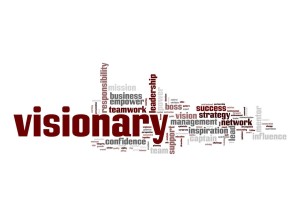 In our last article we shared the value of regular planning sessions for executives. In this article, let’s look at a few ways to ensure that the leadership team, from executives down to first line management, are moving in the same direction and working toward the same goals for the organization.
In our last article we shared the value of regular planning sessions for executives. In this article, let’s look at a few ways to ensure that the leadership team, from executives down to first line management, are moving in the same direction and working toward the same goals for the organization.
- Every CEO should be holding regular meetings with his/her executive team members. These sessions should be focused on discussions around projects being worked on toward achieving goals, as well as sharing information about what is happening with the executive’s division or department. The fine details of every problem is not necessary, the assumption is that individual leaders are capable of handling day-to-day issues that arise. Rather, the focus should be on challenges that may be impactful to the overall business and discussion and agreement on what is being done/needs to be done to ensure the challenge is resolved.
- Every leadership team member should be meeting regularly with their direct reports. This is the time to coach talent, ensure goals are being accomplished and no initiatives are going off track. Sharing of information about the organization, strategies in place, process initiatives and other organizational efforts should be shared by leadership with their direct reports to ensure consistency in everyone moving toward accomplishing the same goals.
- Every other individual within a management role (director, manager, supervisor) should be tasked with meeting with their direct reports on a weekly basis to share information about the organization, discuss and share best practices among staff and resolve challenges in a collaborate manner. The goal here is to ensure that front line leadership and other managers have the support they need to keep their direct reports focused on the right projects at the right time to meet the organization’s goals.
In addition to these regular meetings, consider regular planning sessions involving all levels of leaders within the organization. These planning sessions differ from executive off-sites. They are focused on enabling for cross-functional collaboration and solving business problems that may impact some functions but not the organization as a whole. Such planning sessions enable for sharing of best practices across the organization and enable for innovation in the creation of products and services. While this type of collaboration happens naturally for some organizations, it is often facilitated through coordinated sessions that are planned and facilitated.
Consider this example. A US-based information technology consulting firm brings in Abudi Consulting Group three times a year to facilitate 2-day planning sessions with individuals from throughout the organization – from Directors down to individual contributors. These sessions are held on the East Coast, West Coast and in the Midwest. The goal is to have individuals come together from throughout the organization to focus on evaluating current business processes to look for efficiencies that may be realized to enable for more effectiveness in getting the work done. Each 2-day session includes 30 – 50 employees and enables for a variety of departments to come together to collaborate. These individuals invited to the session are those who have identified areas of improvement in their respective departments. While management is invited, they are there to commit resources and budgets but not to influence the decisions made by the individual contributors. They also serve to answer questions about the organization and the strategic goals. This serves to empower employees to find better ways of getting the work done by collaborating with each other to find innovative solutions to their problems. Attendees are divided into cross-functional teams of 10 – 15 individuals per team based on their proximity to the problem, their use of the particular process in question as well as their interest in that area.
There is work required prior to the 2-day session to ensure that the time spent off-site is well spent given the short duration of the time together as well as the number of attendees. It is an honor to be selected to participate and those who accept are committed to the process. Part of leadership’s responsibility is to select individuals from their department to participate and this is considered a professional development opportunity in the organization.


